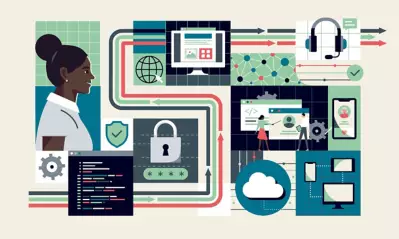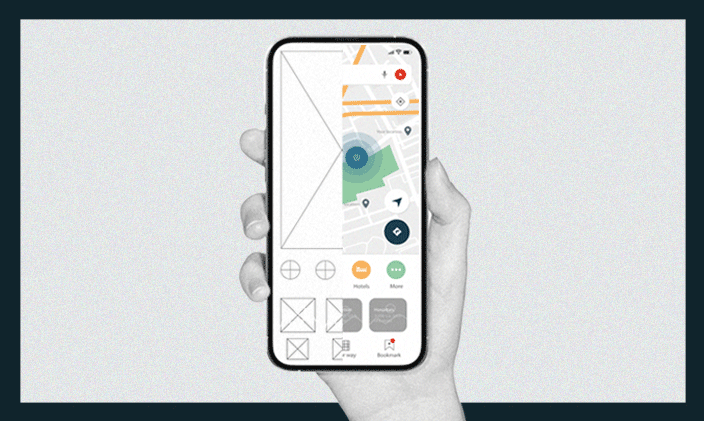University of Phoenix articles
Accounting
Business
Business analytics and intelligence are not the same
How to become a training manager?
Careers in business intelligence
How to become a business intelligence analyst
How to become a business manager
What is corporate communications?
What is a business management consultant?
What can you do with a business administration degree?
How to become an operations manager
What is a master's in management vs. MBA?
What are the steps to get an MBA?
Careers in finance and business
How to choose between MBA vs. graduate certificate programs
What can you do with a master's in management?
What is hospitality management?
Comparing a master’s in finance vs. MBA degree
How to become a business analyst
What are the types of business models?
What is autocratic leadership style?
How to write a unique value proposition
What is a coaching leadership style?
What is supply chain management?
What is the laissez-faire leadership style?
How to become a logistics manager
What is a communication specialist?
Essential tools and courses for MBA students
Data analyst vs. business analyst
How to become a management analyst
What can you do with a communication degree?
Essential business management skills
Jobs in supply chain management
Essential skills for project managers
What is organizational health?
What is a market research analyst?
Different types of business degrees and salaries
What is a bachelor's degree in business?
What can you do with a business management degree?
What is a bachelor's degree in communication?
What is optimal capital structure?
Kanban vs. Scrum in Agile project management
Criminal justice
Cybersecurity
Education
What is behaviorism learning theory?
How to become principal of a school
Building relationships with students
Early childhood vs. elementary education
What is curriculum and instruction?
Jobs with an early childhood education degree
How to become a school administrator
Jobs with a master's degree in adult education
Careers with a Doctor of Education degree
Teacher scholarships and how to apply for them
K–12 teaching in rural vs. urban schools
Strategies for teaching online in a virtual classroom
What is cognitive learning theory?
Adult learning theory and the principles of andragogy
What is constructivist learning theory?
How to use experiential learning style in curriculum
How to get the most from student teaching
How to become a school superintendent
What is a paraprofessional in education?
How to create a welcoming classroom environment
Teacher interview questions and answers
Essential skills for online teaching
What is an instructional designer?
Careers with a special education degree
What is a college admissions director?
How to become a college professor
How to become a substitute teacher
What is a school guidance counselor?
What are education fellowships?
Praxis tests and how to prepare for them
How to have a high school coaching career
How to write a teaching philosophy statement
Entrepreneurship
Environmental science
Finance
Healthcare
The role of compassion in healthcare
Careers in health information management
What can you do with a healthcare administration degree?
What is an MBA/MHA dual degree program?
Is a degree in healthcare management worth it?
How to change to a healthcare career
How to become a health services manager
What is healthcare management?
Healthcare leadership styles and skills
What is evidence-based practice in nursing and healthcare?
What are allied health professionals?
What can you do with a master's in public health degree?
What is a health education specialist?
What is healthcare compliance?
What are some healthcare management jobs?
What is a Master of Health Administration?
Healthcare management vs. healthcare administration
What is epidemiology in public health?
Human resources
Information technology
Tech terms every IT professional should know
Why get a cloud computing certificate?
How to overcome and prevent IT burnout
What are the top operating systems?
What is CIS (Computer Information Systems)?
What is a systems administrator?
What can you do with a data science degree?
How to earn an IT degree online
What is a bachelor's degree in computer science?
What is data science vs. data analytics?
Comparing computer science, cybersecurity and IT
Computer and information technology jobs to consider
What is business intelligence?
What are programming vs. scripting languages?
Computer information systems jobs to consider
How to become a software developer
How to stand out in the competitive tech industry
What can I do with a comp sci degree?
How to become an app developer
What can you do with an IT degree?
The benefits of learning to code
What is information technology?
Are online IT degrees worth it?
Computer science vs. computer engineering
Essential computer science skills
How to become a computer programmer
Software developer vs. engineer vs. programmer
Information technology skills and specialties
Tech credentials to help you upskill and stay relevant
How does digital forensics help solve crimes?
What is the best programming language to learn?
Marketing
Nursing
How to become a charge nurse if you’re an RN
How to become a psychiatric mental health nurse practitioner
Alternative careers for registered nurses
Nontraditional nursing jobs and workplaces
Nursing model vs. medical model of patient care
How to become a nurse administrator
Artificial intelligence in nursing
What are the levels of nursing and degrees required?
Family nurse practitioner vs. APRN
What is the nursing code of ethics?
How to become a director of nursing
What can you do with an MSN degree?
How to become a registered nurse (RN)
Explore different types of nurses and specialties
What is nursing leadership and management?
How to become an oncology nurse
Can I get a nursing degree online?
What is a public health nurse?
How to become a nurse educator
Nursing mnemonics to help you prepare for the NCLEX
Reasons to pursue a nursing career
Working as an international nurse
Nurse burnout symptoms, recovery and prevention


















































Social work
How to Become a Social Worker
Online Degrees
December 07, 2021 • 9 minutes
Careers With a Degree in Social Work
Online Degrees
April 15, 2021 • 4 minute read
Essential Strengths and Skills For a Social Worker
Online Degrees
November 25, 2022 • 6 minutes
Essential theories in social work
Careers in child protective services
What is a family advocate?
Pros and cons of becoming a social worker